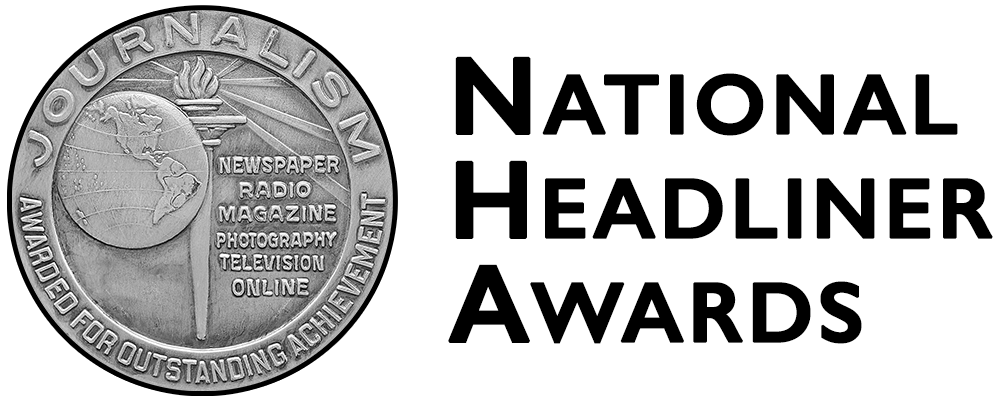At the first Headliners award dinner in 1935, New Jersey Gov. Harold Hoffman explained he was once a cub reporter, making $8 a week. And, he said, judging by editorials in New Jersey papers, some editors still felt “I was worth about $8 a week.”
National Headliners was hatched in 1934 from the bluff and bluster of publicity-hungry Atlantic City, then the nation’s foremost seaside resort. Its midwife was the Press Club of Atlantic City, founded in 1888 and now the nation’s longest-surviving press club.
On June 4, 1933, Mayor Harry Bacharach addressed the Press Club at Hyman’s Restaurant. Bacharah, a brash booster for Atlantic City, said the club should dream up some device to pay homage to distinguished visitors. Influence the influencers, he was saying, though the vocabulary was far in the future. That way, he said, when they went home they would beam about the city, which would earn the town more good will.
Bacharach then returned to his own headline-grabbing antics – like conducting his official business on an amusement pier beside an entertaining chimpanzee and a half-man, half-woman – while the Press Club bent to the task of flattering influential visitors.
In those days, Atlantic City’s image swung by turns between being the wholesome, sun-speckled nest of Miss America and supplying the midnight temptations of Gomorrah-by-the-Sea. Ranks of the Press Club included local journalists, hucksters, press agents and occasional unsavory characters.
“This town was on the map for gangsters, playboys,” said Michael Schurman, longtime Headliners administrator and Press Club leader. Reflecting in 1988 on the club’s first century, Schurman said the group probably once had ties to the mob.
In 1934, the Press Club ignited its publicity bombshell. It invited dozens of top news personalities from the newspaper, radio and newsreel industries for the “National Headliners Frolic,” a three-day, all-expenses-paid June junket. NBC Radio broadcast the Frolic’s banquet, with speeches from leading journalists and news executives.
Participants got parties, sailing trips, a golf tournament at the Atlantic City Country Club, rolling chair excursions and floor shows. Ninety journalists showed up for the freebie.
It got rave reviews. “Tremendous success,” reported the Atlantic City Press. “Plans are already underway to make it one of the city’s permanent gestures of hospitality.”
In 1935, the Frolic was back – this time attached to a contest. A jury of industry and academic professionals selected the first 11 winners. Among them was the intrepid – and well-sourced – Jack Laitt of International News Service who flashed news of FBI agents gunning down gangster John Dillinger to New York before it was officially verified in Chicago.
Things were going so well that the Press Club aimed higher the following year, inviting President Roosevelt. He declined, sending Vice President John Garner in his place.
Ten awards, chosen by judges from the newspaper, radio, magazine and newsreel industries, were given. Among the winners: Lauren D. Lyman of The New York Times for his report on the secret departure of Col. Charles Linbergh and his family from America and William Thomas of Pathe NewsReel for footage of the Johnstown flood.
CBS Radio carried a half-hour report on the award ceremony, delighting the city’s publicity hounds. “While the main objective of the Frolic started in 1934 is to obtain the good will of the key men in journalism, radio and newsreels for the resort,” said the Atlantic City Press, “the city has already obtained a direct return for its investment.”
By 1947, the annual awards attracted so much attention that “Meet the Press,” the radio forerunner to the longtime TV public affairs broadcast, originated from Atlantic City with a panel of journalists attending Headliners.
In 1952, Headliners honored Jake Weiner for his humor column in the Camden Courier Post. Weiner, an elfish raconteur, joined the judging panel in 1953 and went on to lead the judging into the 1990s. It seemed no restaurant in Atlantic City welcomed Headliner judges without Weiner’s signature drink waiting on the bar – the classic Manhattan. Each year, Headliners awards the Jake Weiner Memorial Award to the best-of-show print entry.
By the end of the century, the contest was attracting about 1,400 entries in print and broadcast categories. In 2005, online journalism was added with The Dallas Morning News taking first place. By 2024, there were 18 digital categories and a $1,500 best-of-show award matching those given for broadcast, photography and print entries.
Despite the deflation of the newspaper industry and other headwinds facing competitive media in the 21st century, the contest still attracts more than 900 entries annually, said Mark Melhorn, Headliners administrator.
